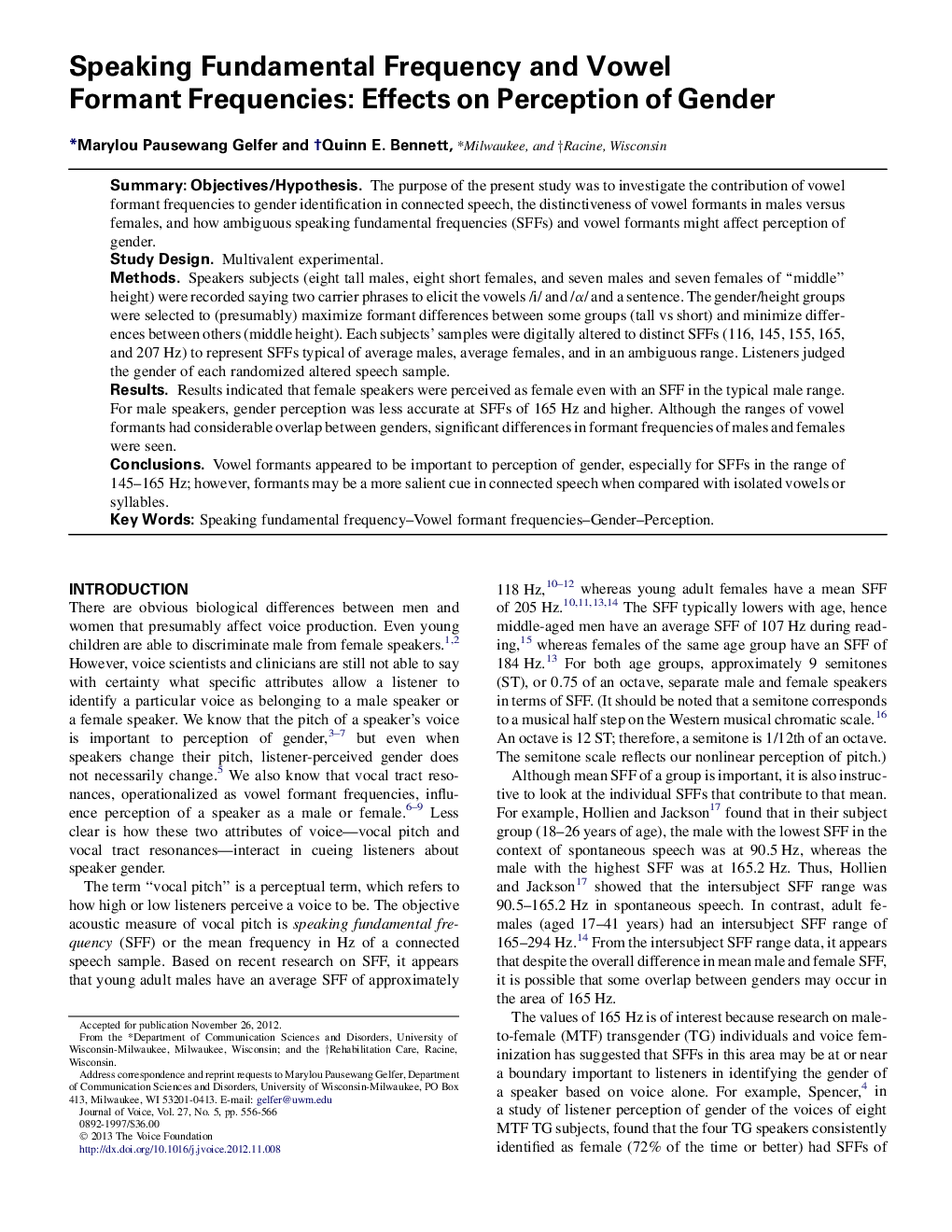| Article ID | Journal | Published Year | Pages | File Type |
|---|---|---|---|---|
| 1101710 | Journal of Voice | 2013 | 11 Pages |
SummaryObjectives/HypothesisThe purpose of the present study was to investigate the contribution of vowel formant frequencies to gender identification in connected speech, the distinctiveness of vowel formants in males versus females, and how ambiguous speaking fundamental frequencies (SFFs) and vowel formants might affect perception of gender.Study DesignMultivalent experimental.MethodsSpeakers subjects (eight tall males, eight short females, and seven males and seven females of “middle” height) were recorded saying two carrier phrases to elicit the vowels /i/ and /α/ and a sentence. The gender/height groups were selected to (presumably) maximize formant differences between some groups (tall vs short) and minimize differences between others (middle height). Each subjects' samples were digitally altered to distinct SFFs (116, 145, 155, 165, and 207 Hz) to represent SFFs typical of average males, average females, and in an ambiguous range. Listeners judged the gender of each randomized altered speech sample.ResultsResults indicated that female speakers were perceived as female even with an SFF in the typical male range. For male speakers, gender perception was less accurate at SFFs of 165 Hz and higher. Although the ranges of vowel formants had considerable overlap between genders, significant differences in formant frequencies of males and females were seen.ConclusionsVowel formants appeared to be important to perception of gender, especially for SFFs in the range of 145–165 Hz; however, formants may be a more salient cue in connected speech when compared with isolated vowels or syllables.
